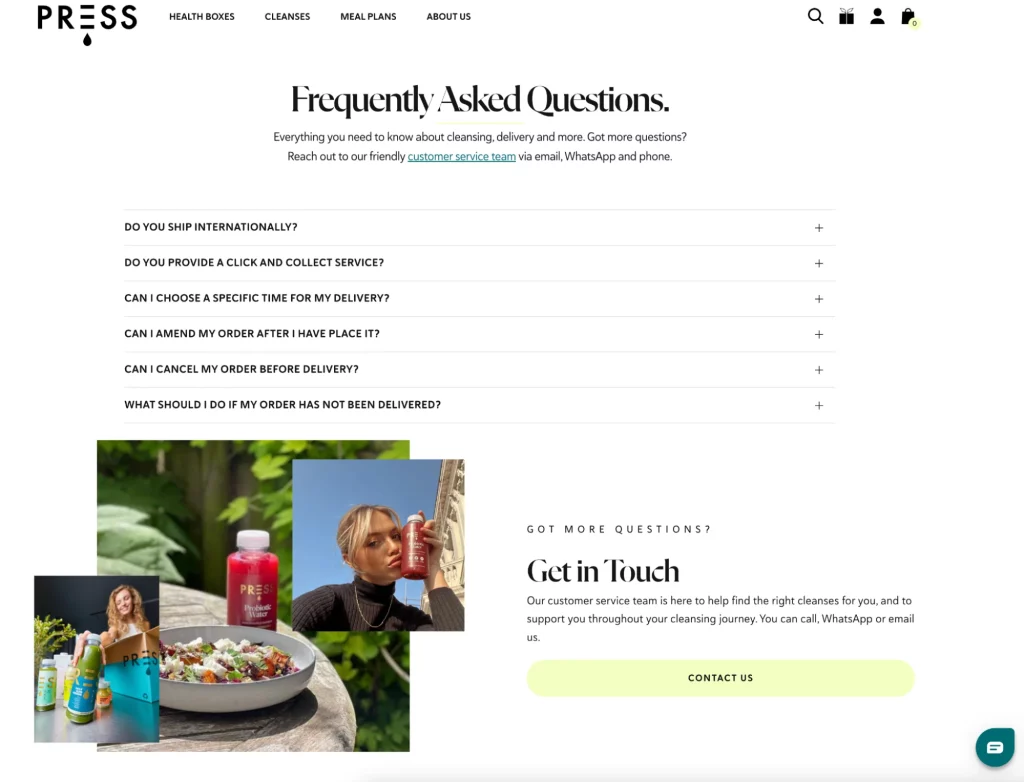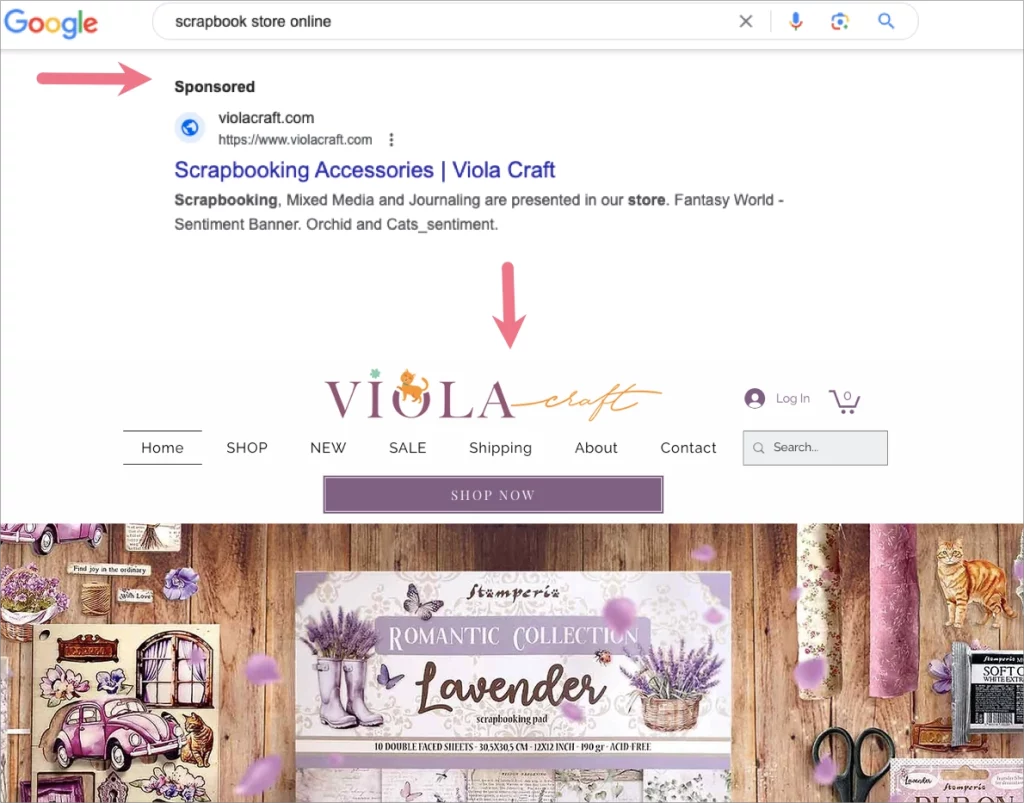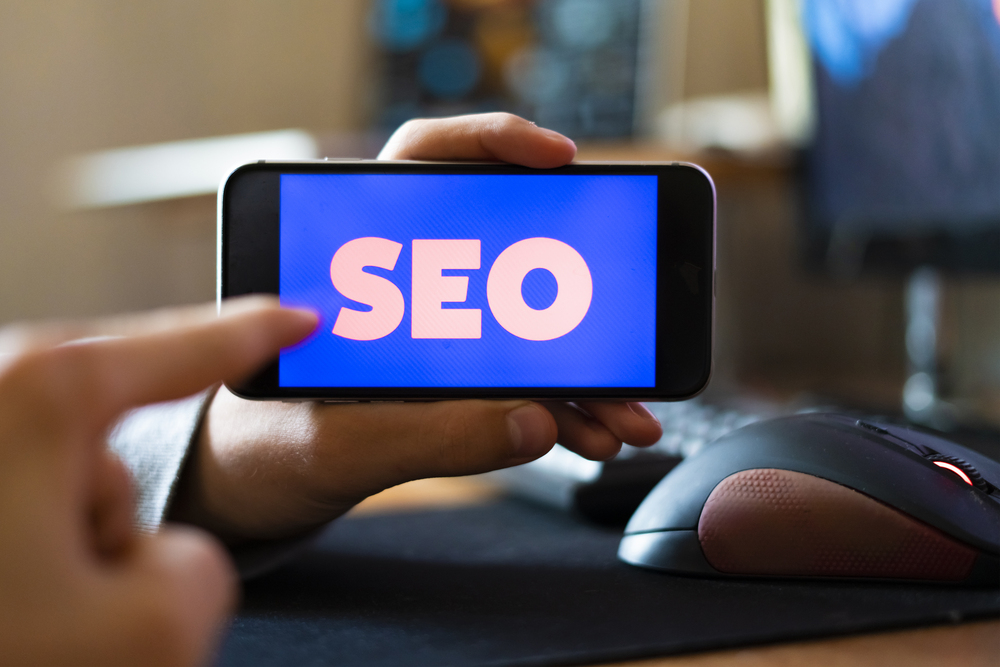ECommerce is the future. It is all about selling things online via websites, apps, social media, etc, taking the business to a whole new level. What was once an uncertain endeavor is now a solid and growing reality, which is why the viability of the eCommerce industry is no longer in question. The eCommerce growth rate globally is expected to average 10.4% and surpass $6.3 trillion in 2023. In 2021, the global eCommerce growth rate hit a record 17.1%, attributed to a global pandemic that made governments initiate lockdowns and force more people to shop online. To put it into perspective, in 2022, North America accounted for $1.14 trillion of Global eCommerce sales, and we are confident 2023 will be even bigger.
So, there is no question about it: the eCommerce market is vibrant and growing at a fast pace, but do you have what it takes to ride this wave and take your eCommerce business to the next level? Therein lies the importance of eCommerce marketing. We truly believe regular individuals who run small to medium-sized businesses and wish to be a successful part of this industry must understand eCommerce marketing. Having a solid company and a good product it’s, of course, a huge part of what will help you succeed, but marketing is how people will find out about your product, what will make them interested in what you have to offer, and ultimately is the tool that will help you grow and take your business to the next level.

What is eCommerce marketing?
In the simplest terms, eCommerce marketing is any promotional tactic that drives traffic to an online store and converts that traffic into actual sales. Effective eCommerce marketing also turns existing customers into long-term buyers and marketers of your business. Knowing how to take advantage of every marketing tool at your disposal will be key to your eCommerce’s growth and will definitely set your business apart from the competition.
What goes into an eCommerce marketing strategy?
To be effective with eCommerce marketing, you must start by crafting a good eCommerce marketing strategy. While online marketing strategies will vary depending on several factors like the niche or type of business, we have come up with a list of “must-haves” for any eCommerce marketing plan that is bound to work today.
Here’s a summary of what your strategy should contain:
1. ECommerce content marketing
Content marketing is undoubtedly the most important component of an eCommerce marketing strategy since most eCommerce today happens via websites and apps. These platforms need content in the form of product descriptions, blog content, product reviews, pictures, and videos in order to attract organic traffic from search engines, as well as keep and convert such traffic into actual sales.
Although there are certain key aspects that must be part of any content strategy, a good starting point will be to keep Google’s recommendations in mind. 84% of all internet users use Google to search for information online, and these are exactly the people you want to target and transform into customers. To do so, creating a content marketing strategy aligned with Google’s recommendations is, therefore, critical.
Moreover, every eCommerce content marketing strategy must be done with search engines in mind (mostly Google), but it also needs to consider audiences. What do your website visitors see when they first land on your website? Do they find what they are searching for?
Our main advice is that content shouldn’t simply be made for search engines. For example, having a blog that meets every SEO requirement to have a good ranking on Google is of course part of the main purpose, but it should never be the only one. The content should also provide valuable information for the reader, be useful, entertaining, and maintain a high-quality standard. Finding the balance between what search engines value and what potential customers are looking for should be the ultimate goal. Let’s explore that in detail.
- High-quality content
The most important ingredient in content marketing is making it high-quality and relevant. It has to be original, a piece of content that not only answers most questions potential website visitors might have, but also earns their trust, and convinces them to take favourable actions like buying something, leaving positive feedback, sharing a link, etc. High-quality content interacts with website visitors and creates positive attention and action better than any other marketing method.
In order for you to know what topics you should focus on and exactly how to create high-quality content, you will need to research your industry extensively. You could also benefit from feedback tools that can tell you what kind of content your target market wants. On a personal note, we recommend you find a balance between informational and promotional content, at 80% and 20%, respectively. Remember, your purpose should not only be to sell a product, you are also engaging with your audience and becoming a useful resource for them, which is why the information you add also needs to be relevant, unique, and interesting. Most importantly, content shouldn’t be spammy or made solely for ranking using various tricks. Google has been clear on any attempts to compromise search results quality and overall search experience.
- Consistent content
The quality also needs to be backed by consistency. Having high-quality content will only get you so far if you cannot produce it on a consistent level. Search engines like Google really value active websites that produce high-quality content regularly.
A site that offers its audience new and valuable information consistently will rank better on SERPs (search engine results pages) than a dormant site that was simply set up and left alone. Examples of content that should be produced/updated regularly include product pages, category pages, blog posts, newsletters, and videos.
2. eCommerce SEO strategy
By now it should be clear why SEO is such a big part of eCommerce: most internet users use Google to search for information and products/services to buy online, and SEO is the key to making sure your business is ranking high on those searches. Since Google ranks written content, pictures, videos, and other types of content, an SEO strategy is paramount for the success of any type of content online.
Given how most internet users focus on page one of Google’s search results, your strategy should not only guarantee you have a solid position, but it should also boost and maintain your ranking, but how exactly can you achieve this?
Let’s discuss a few of the most important areas you should be focusing on when doing SEO for eCommerce:
SEO for eCommerce product pages
Product pages are arguably the most important pages of an eCommerce website or platform. They contain the products you are selling, corresponding descriptions, and other important information. Given the crucial role they play on your website, it’s fairly obvious the need for product pages to be SEO-optimized.
These are the basic requirements for a good product page:
- They need to feature keywords that potential customers use on Google to search for such products.
- Product pages also need to have titles and meta descriptions with the right keywords.
- They must contain structured data, which ensures they generate rich snippets on SERPs that drive more clicks and online sales.
- Product pages also need an FAQs section that answers all commonly asked questions about the products.

Example: FAQs in an eCommerce site. (Image source)
- Product descriptions are another opportunity to showcase high-quality content.
- It also helps to have verifiable customer reviews and testimonials on product pages.

Example: Customer reviews in an eCommerce site. (Image source)
- Lastly, product pages should be tested: search engines consider factors like bounce rates when ranking pages, which is why you should check your conversion rates and click-through rates, test your product pages and find out why people are dropping off, abandoning shopping carts, etc.
- Then, use this information to improve your product page SEO.
SEO eCommerce category pages

Example: Category page in a eCommerce site. (Image source)
Category pages are above product pages in the hierarchy. They are important for SEO since they target keywords that potential customers search for in many instances. However, optimizing category pages is usually a challenge since they hold less text when compared to other pages, but it is still a task we can’t recommend enough.
Let’s start with the basics. In order to have an eCommerce marketing strategy for SEO that ensure you have optimized category pages, you first need to start with adding meta descriptions and title tags with the right keywords. Category page headlines should be relevant and in general, the pages also need text, even if it is short. Adding featured content like related products and header/footer links will also help with SEO.

Example: Footer in an eCommerce site. (Image source)
Off-page vs. on-page SEO for eCommerce
In order for an eCommerce strategy to be successful, we can’t recommend enough looking into on-page and off-page SEO.
Effective SEO eCommerce strategies incorporate on-page SEO, which entails using SEO features to optimize the website factors that are under your control. In simple terms, on-page SEO is focused on building a site that appeals to users and search engines. It is focused on content quality, page speed, title tags, meta descriptions, image alt text, navigation, internal links, mobile responsiveness, etc.,
Off-page SEO, on the other hand, is focused on factors beyond your website. It is about a site building trust and authority. This is achieved through a combination of backlinks (sites linking to your sites), social media presence, unlinked mentions, Google My Business profile, etc. This approach focuses on how your site is perceived and discussed on other sites and on the web.
A good eCommerce SEO strategy combines both on-page and off-page SEO together to benefit from every possible angle. To achieve a successful outcome you must create a solid SEO strategy that takes into account a wide range of focus points and features.
3. eCommerce keyword research
As mentioned, keyword research is another crucial aspect of SEO. In order to have a good chance of ranking on Google you need to know the keywords that people use in your niche, in this case, you’ll want to look for eCommerce keywords in particular.
What are eCommerce keywords?
ECommerce keywords can be described as words used online (on Google) by people who intend to buy something. These include words used when searching for goods/products and services to buy. ECommerce keywords can be classified into three main categories:
A) Short-tail keywords: These keywords indicate a customer’s buying intent until a certain point but are highly competitive and difficult to rank. For example: “women’s t-shirts”, “walking shoes”, “motivational books”, etc.
B) Long-tail keywords: These are longer phrases that include three or more words that shoppers will use to find goods/services they wish to buy online. These keywords are longer and more descriptive. Most importantly, they are less difficult to rank on Google. ECommerce brands keen on ranking faster could benefit from creating content using such keywords. Although they may have fewer monthly searches, they are also less competitive. An example of these types of keywords would be: “valentine’s day gifts for men”, “perfect men’s watch for Father’s Day”, “best flower shop in Los Angeles”, etc.
C) LSI keywords: These are keywords that describe a product in different ways. For instance, instead of using a keyword phrase like “perfect men’s watch for Father’s Day” the keyword can be changed to “top Father’s Day watch for men”.
The importance of SEO in eCommerce is clear. The scope is also extensive and requires expertise. If you are just learning about SEO, and don’t have expert knowledge and/or the time to craft and implement a foolproof eCommerce SEO strategy, talk to Search Engine Optimization experts.
4. Social media strategy for eCommerce
An e-Commerce marketing strategy isn’t complete without considering social media, especially since having a solid social media presence is also a ranking factor. It’s no secret that search engines like Google highly value social proof. However, how do you establish a social media presence that stands out?
If you are just now starting on your social media strategy, consider the following aspects:
- Social media profiles across different platforms need to have a consistent brand image. The profile picture across Instagram, Facebook, TikTok, YouTube, Pinterest, etc., needs to be the same.

Example: Arber Instagram profile
- Social media posts need to be consistent across all platforms.

Example: Arber Facebook post
- Social media content also needs to be high-quality and useful for it to generate engagement among other desired actions like shares, likes, subscribers, and comments.

Example: Arber Instagram feed
- Customer feedback also requires responses, and you need to launch social media campaigns periodically and set up sales funnels.
- Most importantly, you should monitor social media metrics.
We believe these are among the few things you can do to create a powerful social media presence that builds trust and converts social media audiences into actual customers. We certainly base our client’s social media strategies around these starting points, but there is still a lot more that goes into a robust strategy in order to guarantee your brand’s success. Regardless, these aspects should help you get started.
5. ECommerce PPC
ECommerce PPC (pay-per-click) ads should also be included in an eCommerce promotion strategy. PPC ads include digital advertisements that you are charged for only when a user clicks on them. A perfect example includes Facebook ads that show in-between content on Facebook and Google PPC search ads, which are usually located at the top of SERPs and indicated as an ad before the URL.

Such ads are a great way of getting fast traffic and enhancing conversion rate optimization. PPC ads are best used for targeting ready-to-buy shoppers. Although they are more costly than doing SEO, we still believe eCommerce PPC can be used strategically alongside SEO strategies for certain keywords and the results are bound to be noticeable.
We are not going to lie to you, setting up a successful PPC ad campaign is not an easy task, but it truly is worth it and could boost your eCommerce’s online presence. Here are a few tips to get you started:
- It’s a good idea to have landing pages linked to PPC ads as long as you make sure they don’t have any distractions.
- These landing pages should load properly across all devices and only have high-quality content.
- On a more in-depth approach, you need to decide which platform will be better for your business.
- It may be better to run ads on Facebook and Instagram than Google for specific cases.
- You also need a marketing budget for PPC ads to make sense.
If you would like to attempt creating a PPC campaign on your own, we salute you. The road will not be easy but we hope it will have the desired result. If, on the other hand, you would much like to have an eCommerce PPC strategy with guaranteed results, one that turns leads to sales and have a secure ROI, we highly recommend hiring experts in the matter.
6. eCommerce email marketing
Don’t forget to include email marketing in your eCommerce marketing strategy. Contrary to popular belief, email marketing isn’t dead. There are still 4.3 billion active users globally as of 2022 that receive/send 333 billion emails daily. The ROI for email marketing is also stronger than most people realize i.e., $40 for every dollar spent.
There is a “science” to launching and running successful email marketing campaigns. To begin with, having an email list and sending emails regularly isn’t enough, every email must offer value. Additionally, there is a perfect time to send an email: for instance, you should send welcome emails to all users who sign up/provide their email addresses, or buy something. You should also send cart emails to users who abandon carts. We also recommend you send newsletters regularly with new offers, product/service tips, or other relevant information i.e., company news. The most loyal customers also need to be targeted with unique campaigns. To take your email marketing one step further, you could also consider researching best practices for email design and email marketing analytics. If this seems like a lot of work, don’t worry, email marketing can also be done through automation.
To wrap it all up
We hope this guide can help you take your first steps into the eCommerce marketing industry and do so with confidence and the necessary knowledge to thrive! If you follow our steps and recommendations closely we have no doubt you will start seeing results in no time and will definitely witness your business grow and evolve. However, this process takes time, especially if you are just starting to figure it out yourself. If you’d like to see more constant results, with metrics and hard data to back them up, we would be glad to assist you in this process.
Here at Nomadic Advertising we are experts at all things digital marketing and have ample experience with the eCommerce industry in particular. Our approach is based on what we discussed here, with the added bonus of having vast knowledge of many niches as well as a profound understanding of how to best implement these tactics simultaneously for stronger results.
We offer tailored eCommerce marketing strategies for small and medium-sized businesses in the U.S., Canada, and beyond. We have SEO, social media marketing, Google Ads (PPC), and other specialized eCommerce services. Claim your FREE 30-minute non-obligatory eCommerce marketing strategy session and allow us to show you exactly how we can help you take your business to new and exciting heights!
FAQs
How often should you send marketing emails?
Businesses should send their emails weekly, with Mondays or Tuesdays being the days when they are most likely to be opened. However, the exact number of emails may vary based on other factors, such as the subject lines. For instance, flash sales or huge offers have a higher likelihood of being opened than emails with great news as the subject. Sending emails containing deals may therefore make sense even if the frequency of emails is higher.
What is an eCommerce business model?
An eCommerce business model can be defined as an online business model that allows businesses to sell things online. The business model usually involves direct selling, where consumers buy products/services directly from an online retailer. However, the model can involve buying/selling through online intermediaries.
Where can you find eCommerce clients?
You can find eCommerce clients on search engines like Google, social media, or email. There are also some additional places to get leads online, such as online forums.
Which eCommerce platform is best for a small business?
It depends. There are many eCommerce platforms today, most of which are good in certain aspects. For instance, some platforms may be great in regard to pricing, while others may be perfect for certain sale strategies like omnichannel selling, drop shipping, etc. ECommerce marketing experts are the best-suited professionals to advise on which platform is best for different businesses.






